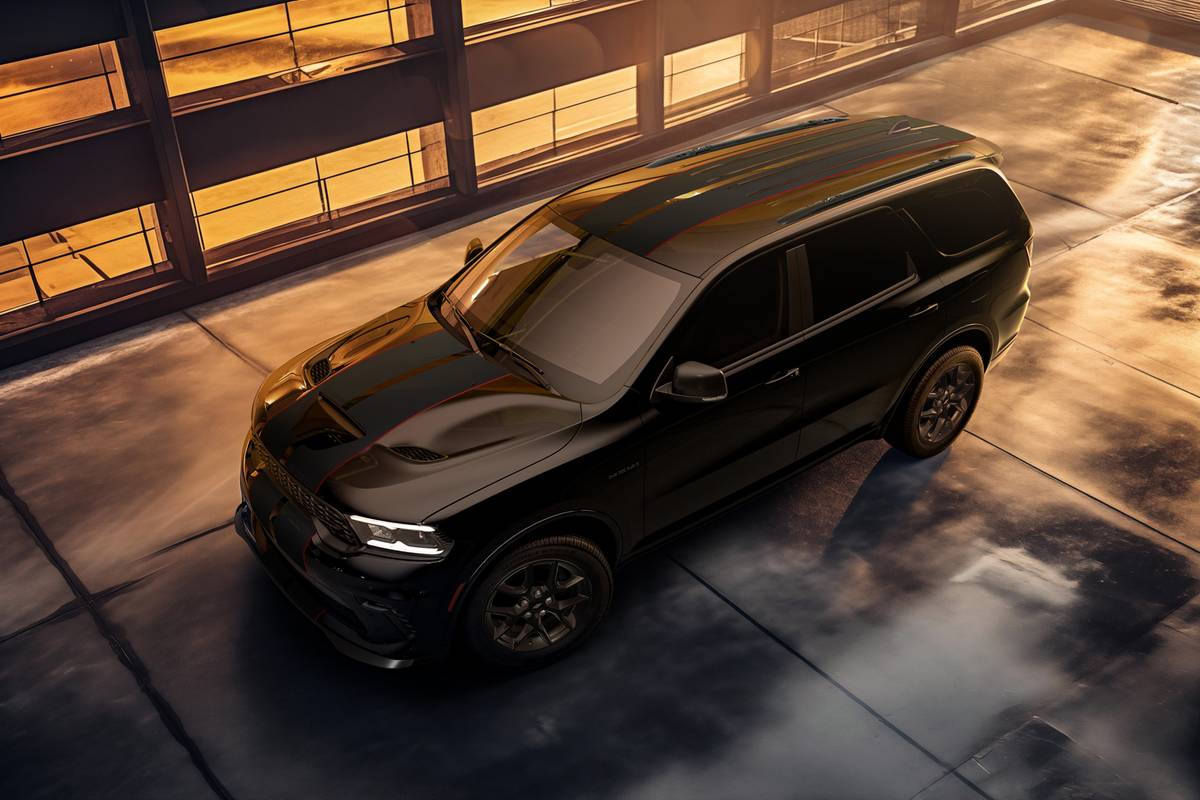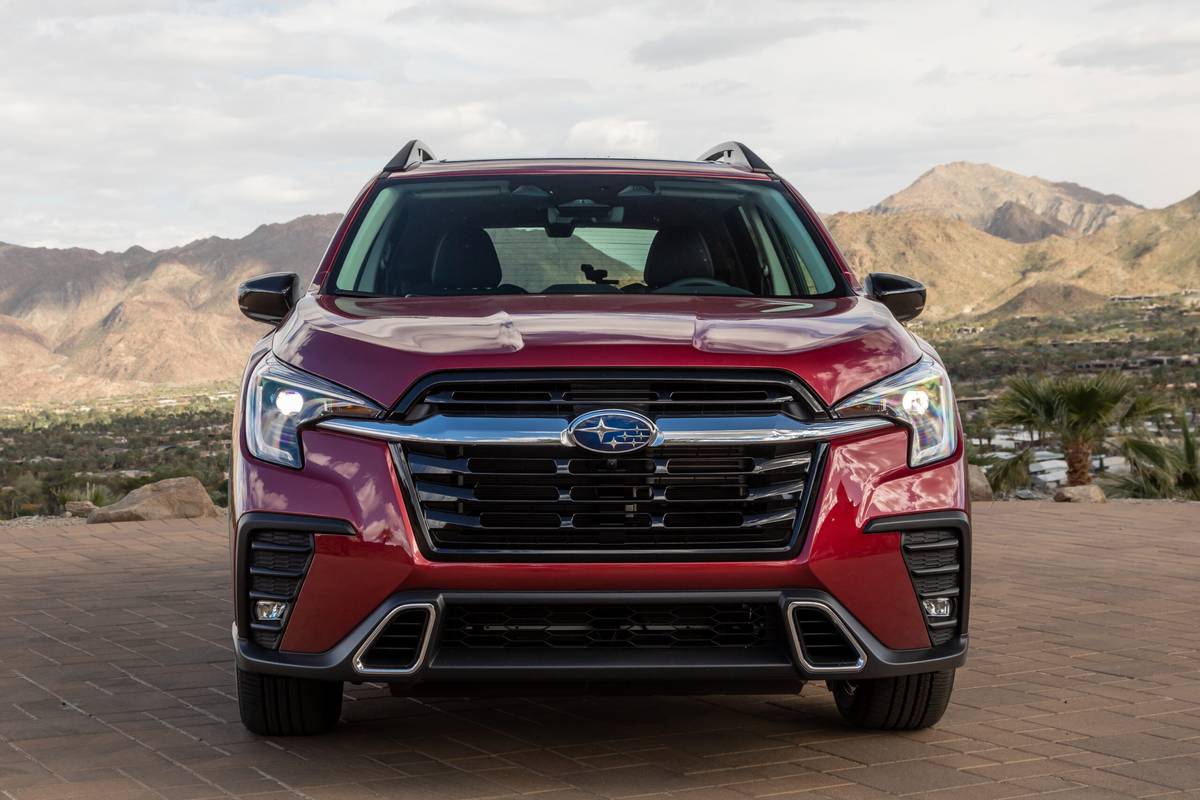Cincinnati.com's view
You’d tell a friend if she had a piece of spinach in her teeth, wouldn’t you? Better to hear it now than suffer more later. Well, in the same spirit of tough love, I have a message for Subaru, a company I admire, and whose products I have often praised in print: You’re nuts if you think you’re going to sell many Outbacks at more than $30,000. It’s not the sticker shock of passing that very important psychological spending barrier, it’s the exterior design: It’s a dork.
Maybe the people who bought AMC Pacers will buy one, but I doubt they’ll have gotten to the point of having the scratch. Subaru has gotten it backwards — they’ve improved the steak but paid no heed to the sizzle. The company rightly prides itself on pioneering the concept of “crossover” vehicles, i.e., machines combining the best qualities of sport-utilities and passenger cars or wagons. And the 2001 model-year Outbacks are in a number of important ways a quantum leap better than last year’s crop.
But in positioning them against (Subaru picked ’em) the Audi A4 Avant, Volkswagen Passat and Volvo V70 Cross Country, Subaru leads one to wonder whether the designers have the visual acuity required for a driver’s license. Trust me — the Outbacks are dorky beyond what spokesman Paul Hogan can repair. Come to think of it . . . oh, never mind, he could probably take me.
The big news this year is that the Fuji Heavy Industries affiliate has developed an all-aluminum, SIX-cylinder version of its unusual flat-four, or “boxer,” engine, and crammed it into the top-of-the-line Outbacks. Not only that, they’ve tricked up the drivetrain with computer-aided improvements that make them the equal of the far pricier Big Names. For some years now, Subaru has used the boxer-style engine, otherwise known as a horizontally-opposed flat four. (The vast majority of four-cylinder engines have their cylinders lined up in a row.)
Porsche and a couple of exotic-car makers have adopted the boxer principle for the same reason Subaru did — it’s compact, it lowers the vehicle’s center of gravity, and has tendency toward self-damping, thereby reducing the vibration inherent in engines with four firing pulses. The lower orders of Outback sedans and wagons, like the Sport series that starts at $18,195, get either the 2.2-liter four-cylinder, rated at 142 hp, or its big brother, the 2.5, which makes 165. The new six is a 3-liter, 24-valve, double-overhead-cam mill that’s rated at 212 horses and 210 foot-pounds of torque. That’s a 28 percent increase in power over the more energetic of the fours, as well as a 26 percent boost in torque. We’re talking seat-of-the-pants perceptible.
I wish that Subaru had tuned the new engine for better low-range response, but I know what they’re about. By optimizing horsepower, they win bragging rights over all of the aforementioned competitors, the most potent of which, the Volvo, can only claim 197. Subaru’s power peak comes at 6,000 rpm , which is a state of tune better suited to sports cars than vehicles with even modest off-road aspirations. I discovered the new-found power lay dormant until the tachometer passed 4,000. Launch feel is no more urgent than what the admirable old four gave us. Once you’ve made it into the heady range, though, the six sings sweetly and seems ready to respond instantly.
The compression ratio is high for a mass-market vehicle, 10.7:1. This helps boost power and improves throttle response, but also creates a thirst for the good stuff, i.e., 91-octane unleaded. Subaru says the engine can be operated on 87-octane without doing any damage, though output will be diminished. What’s the point? The two series that get the six are the cushy L.L. Bean Edition and the alluringly-named H6-3.0 VDC. I was lent the latter.
The first part of the name tells us about the engine, while VDC stands for Vehicle Dynamics Control. That’s a version of a feaure we’ve seen before on more perfo e-oriented machines. It goes a step beyond traction control to make one a better and – or safer driver by watching over what’s going on down where tire meets road.
Traction control per se, which the Outback VDC has, is a pretty impressive use of computer power combined with the observations of the sensors which are already in place for the antilock brakes. When wheel slip is detected (i.e., when the wheel sensors show a wheel is turning appreciably faster than its mates), braking force is applied to that wheel to lower its spin rate to where it again can bite the road surface. It’s always better than nothing, and in some implementations, quite impressive. The Subaru Vehicle Dynamics Control (VDC) system is actually the first line of defense against loss of control. It uses traction control only as a last resort.
VDC employs sensors to monitor steering angle and yaw rate (the turning of the vehicle about its longitudinal axis). It sends that data to its microcomputer which calculates whether the car is going in the intended direction. If it’s oversteering — i.e., the rear end is starting to break away — a teensy amount of braking force is applied to the outside front wheel. If it’s understeering — i.e., slipping toward the outside of a turn — then the brake on the inside REAR wheel is actuated. If that doesn’t suffice, then the traction control system comes into play. As a last resort, the computer can order the engine room to send less power, if, say, all four wheels are spinning.
Bear in mind that this, like all U.S.-market Subarus, is an all-wheel-drive machine. It is set up so that in steady-state driving, 45 percent of the torque is sent forward, 55 aft, so that the handling feel is more like a rear-drive machine’s. As conditions change, more or less power can be directed rearward. In practice, it works splendidly, and virtually undetectably. To the non-studious driver, it just gives the impression the vehicle is fitted with ultra-sticky tires. If you observe closely while attempting to push the car beyond the envelope, it’s fascinating.
The Outback has long-travel, fairly soft springs, which make for a comfortable ride and allow the vehicle to maintain its relationship with macadam even when the latter is badly rutted. The brakes are discs fore and aft, and they get the job done well enough, but pedal travel is long enough and pedal feel soft enough to be disconcerting. Neither feds nor insurance folks have crash-tested this model.
Audiophiles will recognize the name McIntosh, which is the label on the front end of the standard 11-speaker AM-FM-cassette-CD stereo system. Clarity was exceptional, although tuner sensitivity and presence fell short of that mark. The wagon also has dual power moonroofs, leather trimmed, heated front seats, dual front and side air bags, and a delightful Momo wood-and-leather steering wheel. All in all, it’s a delightful luxury plus performance package, bel ied by the wrapper. The H6-3.0 VDC started at $31,895 and ended at $32,390 in the case of the tester, to which only the drayage fee was applied. Payments on that machine would be $657, assuming 20 percent down, 10 percent interest and 48 installments.
“The Gannett News Service”
Latest news



